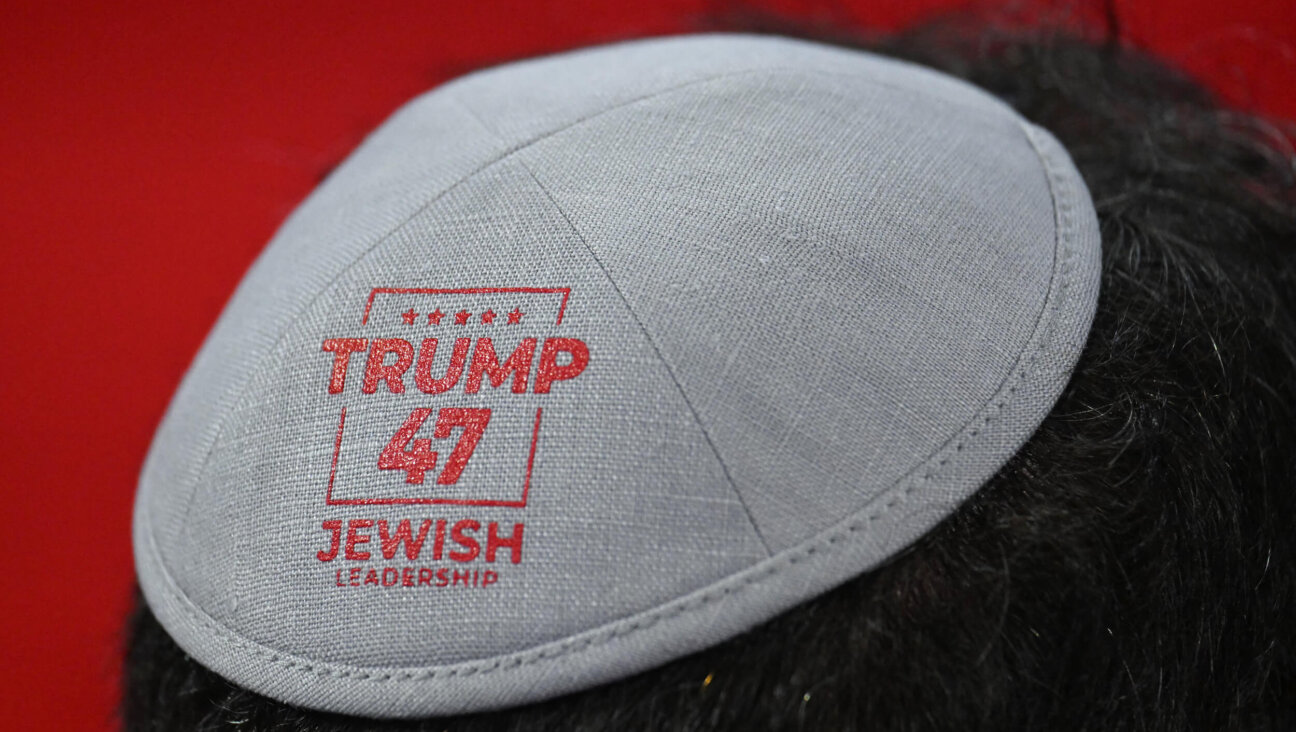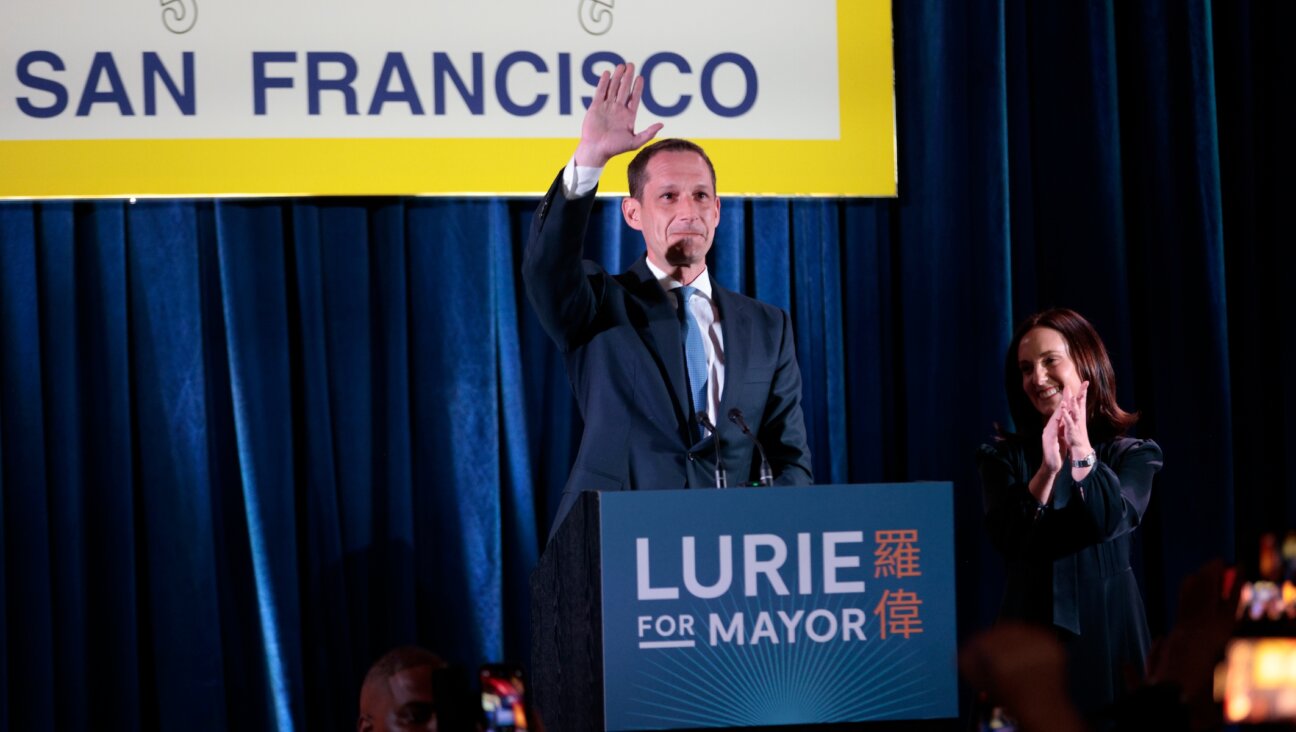Filmmaker Finds Inspiration in a Bar’s Motley Crew
Slumping in his chair, debut film director Eitan Gorlin oozes California cool. His hair, almost blond, flops into a bowl cut; his corduroys, white but slightly dirty, are rolled above his ankles, and his lone accessory, an unadorned silver ring, sits oh-so-defiantly on his thumb.
If Gorlin comes across as cool, however, his new film is almost too hot to handle. Within the first 30 seconds, it features a monologue from a prostitute, a close-up on a woman’s bare breast and a powder-room masturbation scene.
It might come as a surprise, then, to learn that Gorlin grew up in an ultra-Orthodox Jewish world and that he used to be a “black hat.”
The film, “The Holy Land” — a coming-of-age story set against a dramatic Israeli backdrop of Orthodox Jews, zealous settlers, Russian whores and hedonistic American ex-pats — is based upon Gorlin’s unpublished novella, “Mike’s Place, A Jerusalem Diary,” which itself is based upon the real-life Jerusalem nightclub, Mike’s Place, where Gorlin worked during the early 1990s.
“It was very much a bar of outcasts,” the Los Angeles-based Gorlin, speaking in clipped, staccato speech, recalled of his inspiration. “We had customers who, if you saw them on the street, you’d think they were homeless beggars. But when they came into the bar, they’d have these rich personalities.”
“It made no sense to me why all these people were sitting in the same room,” he said, referring to the motley crew of Israelis, Arabs, journalists, students, travelers, Eastern European intellectuals and Irish construction workers. And yet, through their bizarre camaraderie, he said, Mike’s Place customers “were making a certain peace with insanity.”
A fictional Mike’s Place provides the anchor for the torrent of subplots that is “The Holy Land.” At its simplest, “The Holy Land” is the story of Mendy, a Talmud student who is increasingly distracted by his raging hormones. His rabbi advises that he visit a prostitute to get it out of his system. After a brief — very brief — encounter, Mendy promptly falls in love with Sasha, a young Russian escort, while simultaneously striking up a friendship with one of her clients, Mike, the American owner of Mike’s Place. Mike soon takes doubt-ridden Mendy under his wing, employs him at his bar and introduces him to a bizarre cast of characters, including Razi, a suspicious Arab high-roller and “the Exterminator,” a gun-toting American settler.
“Characters come first,” said Gorlin, who directed two unreleased films prior to “The Holy Land.” “In my work, somehow Mike’s Place always showed up.”
Mike Viggoda, a photojournalist, opened the real-life Mike’s Place in Jerusalem in 1993 and attracted an eclectic crowd drawn to the free, live music every night. A Mike’s Place regular “inherited” the club when Viggoda split for Canada and, during the calm between the intifadas, Mike’s Place grew into an institution for the traveling and year-abroad crowds. In July 2001, another Mike’s Place opened on the beach in Tel Aviv — and on April 29, 2003, a suicide bomber attacked the club, killing three and injuring 50.
Parallels can be drawn between Gorlin’s personal biography and that of the film’s protagonist, Mendy. Like Mendy, Gorlin grew up religious and eventually found himself outside the fold. While Mendy seeks the “truth” in Sasha’s smile and in a copy of Herman Hesse’s “Siddhartha” — hidden not quite discreetly inside his Talmud — Gorlin himself, as a child, found solace in another, non-biblical classic: James Joyce’s “A Portrait of the Artist as a Young Man.”
“It had such a profound influence on me,” Gorlin said. “It was the identical story I was going through — except that instead of Dublin, it was Silver Spring, Md.; instead of the seminary, it was a yeshiva, and instead of a priest, a rabbi.”
And yet, Gorlin is oddly reluctant to speak about his past. “I’m sick of talking about it,” he said. “What did Ann Landers say? Something about [how] shallow people talk about other people, and mediocre people talk about events — but smart people talk about ideas.”
Nonetheless, a prodding journalist learns that Gorlin, 34, grew up in a Modern Orthodox family in suburban Washington, D.C. As his first act of rebellion, around age 13, he entered what he calls the “black hat yeshiva world,” later graduating from an all-male, ultra-Orthodox yeshiva.
His second act of rebellion was to enter a religious Zionist yeshiva and affiliate with the settler movement. “For me, Israel was the West Bank and Gaza,” he said of his “Tanakh and guns” experience.
“The problem with Orthodox Judaism is that it gives you all the answers,” he said. “If you grow up with the notion of God, then you keep on replacing God with something else. At one point, art became my religion.”
Upon returning to the United States and after a brief stint at Yeshiva University, he enrolled at the University of Pennsylvania and, he said, “I never looked back.” After graduation in 1991, Gorlin briefly worked at Glacier National Park in Montana. He then traveled for a year, ending up in Israel for his brother’s wedding — where he stayed for the next three years, including one year of service in a tank unit of the Israeli army. His first foray into film was in 1995, when he landed a position doing electrics on a Korean movie shot in New York’s Chinatown.
Whether he considers himself Jewish today is tricky. After pausing at great length, he said, “I believe in the soul a lot more than I believe in tribal affiliation. It’s important, families and tribes — these things are all very basic in how humans organize themselves. But I don’t wake up, look in the mirror and say, ‘Good morning, Jew.’”
In fact, he seems inclined to qualify his religious background: “I have grandparents who are French. My father has a Ph.D. Even when I was in the Orthodox world, I still saw other ways of living.”
“I was all over the place,” he said, summarizing his criss-crossing of the Jewish map. “That was very helpful to the line of work I chose. I have to be able to tell a lot of different points of views.’
Perhaps too many points of views, as critical response to the film has been mixed. While the film took the Grand Jury Prize for Best Feature Film at the 2002 Slamdance Film Festival and Gorlin has been lauded as a promising director, “The Holy Land” has also been criticized as “too oblique” by The New York Times, while Newsday describes the film as too packed with “iconoclastic characters-with-a-capital-C.”
“This film is for the people, not the critics,” Gorlin said. “Mike’s Place was very much about the people. It’s about giving voice to human beings.”
A message from our CEO & publisher Rachel Fishman Feddersen

I hope you appreciated this article. Before you go, I’d like to ask you to please support the Forward’s award-winning, nonprofit journalism during this critical time.
At a time when other newsrooms are closing or cutting back, the Forward has removed its paywall and invested additional resources to report on the ground from Israel and around the U.S. on the impact of the war, rising antisemitism and polarized discourse.
Readers like you make it all possible. Support our work by becoming a Forward Member and connect with our journalism and your community.
— Rachel Fishman Feddersen, Publisher and CEO






















